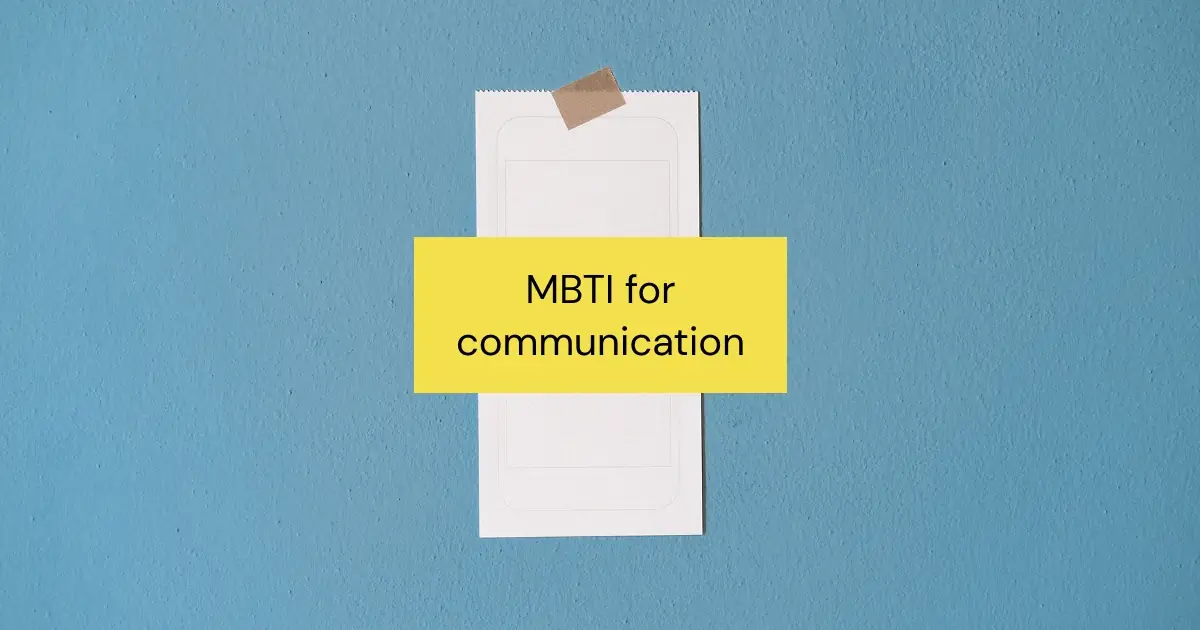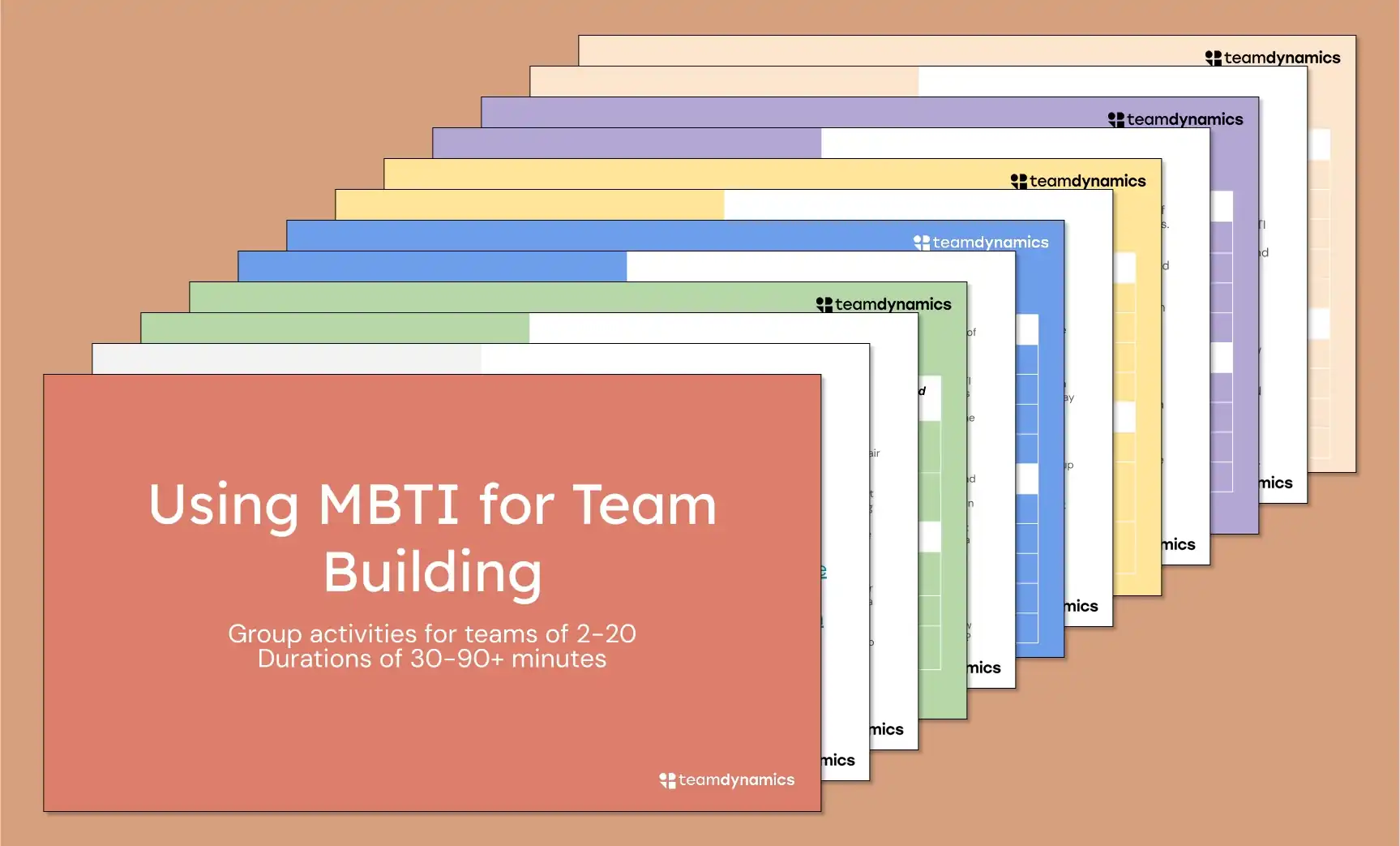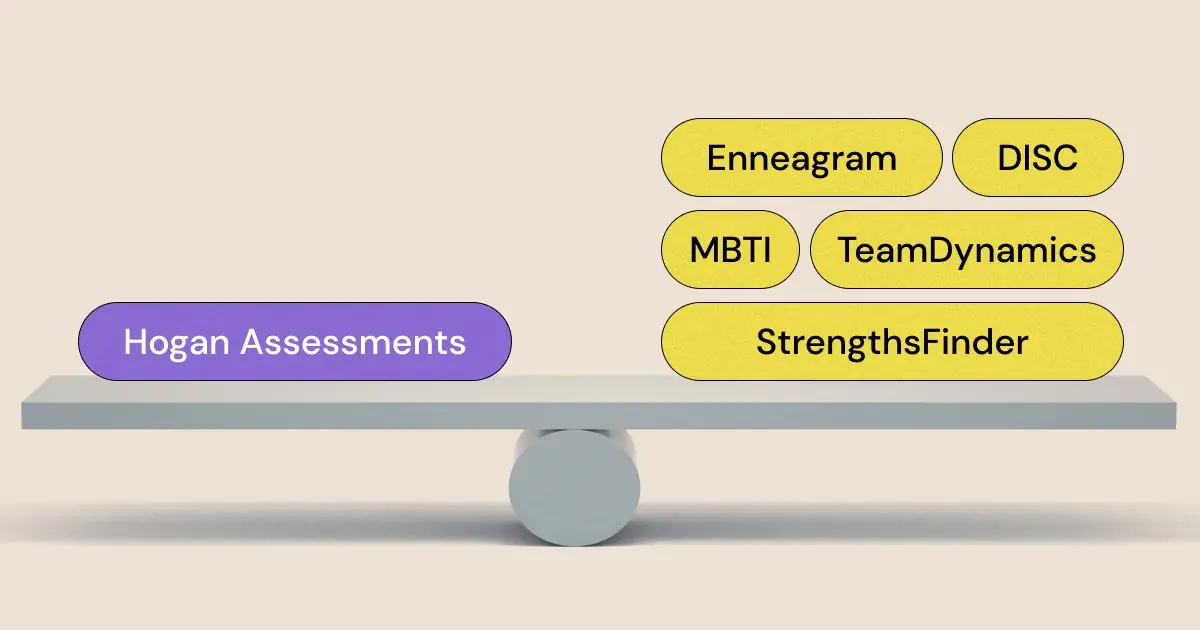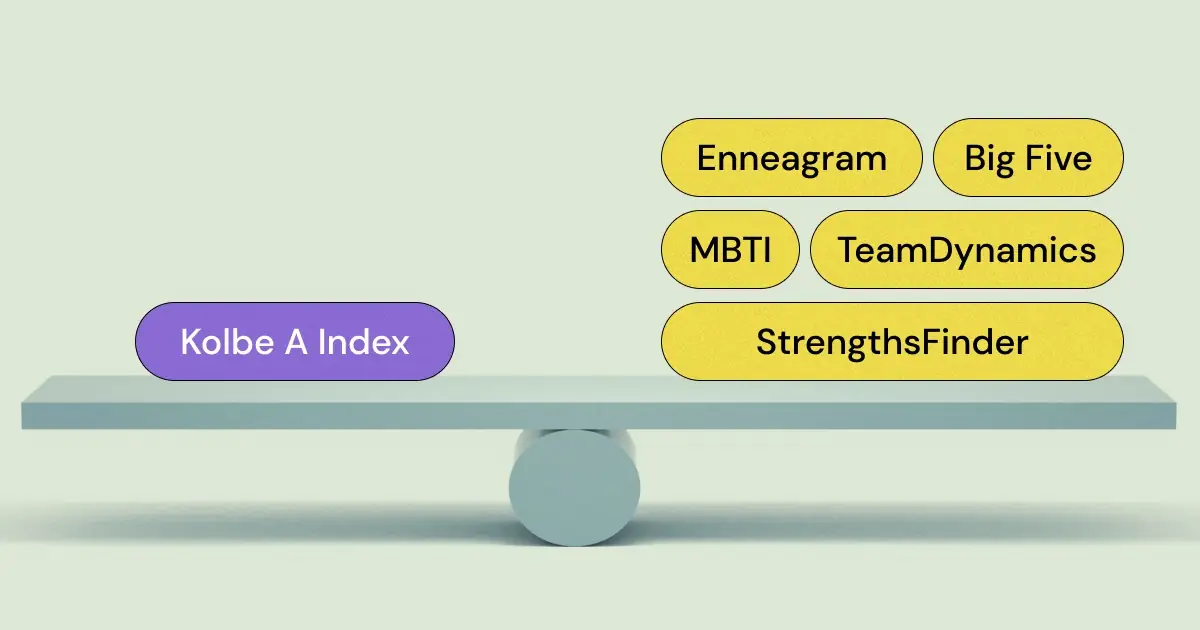Ever heard of the Myers-Briggs Type Indicator (MBTI)? It's a personality test that helps people understand themselves better - and it can do wonders for communication in the workplace too! Imagine a work environment where everyone understands each other, where messages are clear and conflicts are few. That's what MBTI can help achieve.
The MBTI breaks down personality into four key areas: how we get energy (Extraversion or Introversion), how we take in information (Sensing or Intuition), how we make decisions (Thinking or Feeling), and how we deal with the world (Judging or Perceiving). Each of us leans more towards one side in each pair.
But why does this matter for communication at work? It’s simple: different personality types have different communication styles. Some people like direct, logical communication. Others prefer a more empathetic, personal approach. By understanding these differences, we can tailor our messages to be more effective.
Looking to improve your team's communication? Check out 10 effective communication team building activities!
MBTI’s Cognitive Functions: The Key to Unlocking Better Communication
The Myers-Briggs Type Indicator (MBTI) is more than a set of four letters. It also includes eight cognitive functions that help us understand how people perceive and make decisions about the world. By understanding these cognitive functions - Extroverted Sensing (Se), Extroverted Feeling (Fe), Extroverted Thinking (Te), Extroverted Intuition (Ne), Introverted Sensing (Si), Introverted Thinking (Ti), Introverted Intuition (Ni), and Introverted Feeling (Fi) - we can revolutionize the way our teams communicate.
Looking to use MBTI for team building? Download these free templates for MBTI team building workshops!
Cognitive functions represent how each personality type interacts with their surroundings and processes information. Each function can be "Extroverted" (oriented towards the outside world) or "Introverted" (oriented towards inner thoughts and feelings). It can deal with either "Sensing" (focused on tangible facts and details), "Feeling" (concerned with emotions and values), "Thinking" (leaning towards logic and rationality), or "Intuition" (preferring abstract ideas and possibilities).
These cognitive functions are organized in a specific order, from the most dominant to the least, and the roles they play are different. It sounds more confusing than it is: once you know someone’s dominant and auxiliary functions, you know all you need to communicate better:
- Dominant Function: This is the cognitive function that is most natural and comfortable to a person. It's the one they use the most, and it's often the first one they turn to when they need to process information or make decisions. It's the main way they interact with and understand the world. For example, if a person's dominant function is Extroverted Thinking (Te), they're likely to approach the world in a logical, structured way, seeking efficiency and organization.
- Auxiliary Function: This is the second most prevalent cognitive function for a person. It supports and balances the dominant function. While it may not be as automatic or comfortable as the dominant function, it still plays a significant role in how a person behaves and thinks. For instance, if a person's auxiliary function is Introverted Intuition (Ni), they might support their primary thinking or feeling function with insights about future possibilities and underlying meanings.
In the MBTI, the dominant and auxiliary functions create a balance. If the dominant function is an extraverted function, the auxiliary will be introverted, and vice versa. This balance helps people navigate the world with a mix of outward and inward focus, and logical and emotional processing, although the exact mix will depend on their specific MBTI type. Understanding these can help you cater your communication style to each team member.
{{inline-cta}}
A Step-by-Step Guide to Using MBTI Cognitive Functions for Better Communication
Now that you understand the theory, let’s put it into practice with the following 4-step guide.
Step 1: Identify Each Team Member's Cognitive Functions
Have your team take the MBTI test, and then use their results to identify their dominant and auxiliary cognitive functions. Each MBTI type has a specific order of functions, so this should be straightforward once you have their four-letter MBTI personality type: simply take their 4-letter MBTI archetype and match it to what you see on the below table:
| MBTI Personality Type |
Dominant Function |
Auxiliary Function |
| ESTP |
Se |
Ti |
| ESFP |
Se |
Fi |
| ENFT |
Ne |
Fi |
| ENTP |
Ne |
Ti |
| ESTJ |
Te |
Si |
| ESFJ |
Fe |
Si |
| ENFJ |
Fe |
Ni |
| ENTJ |
Te |
Ni |
| ISTJ |
Si |
Te |
| ISFJ |
Si |
Fe |
| INFJ |
Ni |
Fe |
| INTJ |
Ni |
Te |
| ISTP |
Ti |
Se |
| ISFP |
Fi |
Se |
| INFP |
Fi |
Ne |
| INTP |
Ti |
Ne |
For example, if someone on your team is an INTP, their dominant function is Ti (Introverted Thinking) and their auxiliary function is Ne (Extroverted Intuition).
Step 2: Understand How Each Function Communicates
Each cognitive function has a unique communication style. Here's a brief rundown:
- Se (Extroverted Sensing): Focused on present realities, prefers clear, concrete facts and details.
- Ne (Extroverted Intuition): Enjoys discussing possibilities and ideas, appreciates brainstorming and creative thinking.
- Te (Extroverted Thinking): Prefers logical, structured, and efficient communication. Likes to get straight to the point.
- Fe (Extroverted Feeling): Values harmony and consensus, communicates with empathy and consideration for others' feelings.
- Si (Introverted Sensing): Relies on past experiences, appreciates step-by-step instructions and routines.
- Ni (Introverted Intuition): Looks at the big picture and future implications, appreciates discussions about strategy and long-term goals.
- Ti (Introverted Thinking): Enjoys analyzing and categorizing information, appreciates logical consistency and precision.
- Fi (Introverted Feeling): Values authenticity and personal values, communicates in a way that is true to self.
Step 3: Adjust Your Communication Style For Each Individual
Adapt your communication style based on your team members' dominant and auxiliary cognitive functions. For example, for someone with dominant Se, give clear, factual instructions. For someone with dominant Fi, ensure your communication is genuine and considerate of their values. If you’re communicating with someone with an auxiliary Ti, try to add analysis, categorization, and logic to what you’re communicating. For someone with an auxiliary Ne, don’t be afraid to have an open-ended brainstorm or whiteboard session.
Want to know how to get along with your team's MBTI chemistry? Click here if you're a Feeler looking to thrive in a Thinker-dominated environment.
Step 4: Encourage Others to Do the Same
Share this understanding with your team. Encourage them to identify their own cognitive functions and to consider others' when communicating. This step not only enhances team communication but also fosters a culture of empathy and understanding.
Where MBTI Falls Short: Communicating Across Various Personality Types
The Myers-Briggs Type Indicator (MBTI) is a powerful tool for understanding individuals. It shines a light on our personal communication styles and decision-making processes. This can be incredibly helpful in 1-on-1 interactions where we can tailor our approach to the individual's MBTI type. But what happens when we move from a one-on-one interaction to a larger team setting?
Picture this: You're in a team meeting. You've got an ISTJ, an ENFP, an ESFJ, and an INTP. Each of these personality types has unique communication styles, ways of processing information, and problem-solving approaches. Now, it's one thing to adjust your communication style when you're dealing with one person, but what about when you have to balance the needs of all these different types in one team? That's where the MBTI comes up short.
MBTI is like having a detailed map of several different countries. It's handy when you're traveling in one country at a time. But when you're dealing with a whole continent—your team—what you really need is a map that shows how those countries fit together.
This is where TeamDynamics steps in. Unlike MBTI, which focuses on individuals, TeamDynamics assesses the behavioral norms of an entire team. It offers a holistic view of your team's dynamics, highlighting how each individual's behaviors and communication styles intersect and influence each other. With TeamDynamics, you gain insight into the collective behavior of the team as a whole.
In fact, one of the four dimensions of TeamDynamics is "Communicating" - how the team shares information: Teams are either Ordered (information is surfaced and shared through defined processes and forums) or Informal (information is surfaced and shared organically).
To truly understand and improve team communication, you need to look beyond individual personality types. By combining the individual insights from MBTI with the comprehensive team view from TeamDynamics, you can effectively bridge the communication gap and foster a more collaborative, understanding, and productive team environment.
Looking for alternatives to MBTI? Here a look at the top 5 MBTI alternatives.
Conclusion
In our quest to boost team communication, we've journeyed through the intriguing world of the Myers-Briggs Type Indicator (MBTI) and discovered how its cognitive functions can enlighten our individual interactions. But, as we've learned, understanding each team member on a one-on-one level is only part of the picture.
While MBTI excels at providing insights into individual communication styles, TeamDynamics fills the gap by assessing the behavioral norms of the entire team. It's the piece of the puzzle that lets us see how all the different personalities on a team interact and influence one another.
The magic truly happens when we combine the individual insights from MBTI with the holistic view provided by TeamDynamics. This powerful duo can help us navigate the complexities of team communication, ensuring that we cater to individual communication preferences while fostering a harmonious and productive team environment.
So, whether you're a team leader, a manager, or a team member looking to improve communication, consider using both MBTI and TeamDynamics. They offer a comprehensive approach to understanding and enhancing team communication, taking you one step closer to building a highly effective, cohesive team.
Remember, better communication is within reach. All it takes is a little understanding, the right tools, and a commitment to improvement. So, why not start your journey today?
Check out our other MBTI resources!
We hope you've found this guide useful. Remember, everyone's experience is unique, and it's about finding strategies that work best for you. If you enjoyed reading this, don't keep it to yourself! Share it with your friends, colleagues, or anyone you think could benefit from it. Let's create a more understanding and inclusive workplace together!
MBTI is one of the most popular personality tests, and people are always asking us how they can better use it with their teams. Here are a few other useful articles you can try:
And if you're looking to crack the code on working with a specific MBTI type, check out our guides written just for you:
Interested in diving deeper into personality types, teamwork, and team performance? We've got a treasure trove of insightful articles just waiting for you to explore. Check out our other blogs on topics like team dynamics, effective communication strategies, and more in-depth dives into different personality tests. And check back often - we're always publishing more great content!




.png)










































